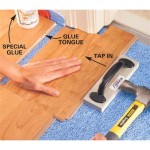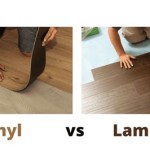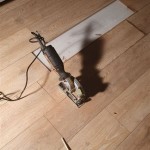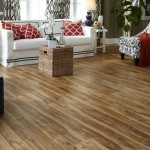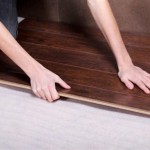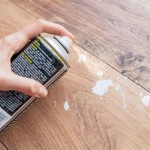Is Vinyl Plank Flooring Good For Stairs? An In-Depth Analysis
Vinyl plank flooring has gained considerable popularity as a flooring option for various areas within a home, largely due to its durability, water resistance, and aesthetic appeal. However, the suitability of vinyl plank flooring for stairs remains a complex question, demanding careful consideration of its pros, cons, and installation requirements. This article will explore the multifaceted aspects of using vinyl plank flooring on stairs, providing a comprehensive analysis to aid in informed decision-making.
The decision to install vinyl plank flooring on stairs necessitates evaluating factors such as safety, durability, cost-effectiveness, and the overall aesthetic impact. While vinyl plank offers certain advantages, it also presents challenges that homeowners and installers must address to ensure a successful and safe installation. A thorough understanding of the product’s limitations and the specific demands of staircases is paramount.
Key Point 1: Advantages of Vinyl Plank Flooring on Stairs
One of the primary advantages of utilizing vinyl plank flooring on stairs is its inherent durability. High-quality vinyl plank is designed to withstand significant foot traffic, making it a potentially long-lasting solution for stairs, which are often subject to considerable wear and tear. The wear layer, a protective top coating, plays a crucial role in resisting scratches, scuffs, and stains. This is particularly important on stairs, where daily use can quickly degrade less robust flooring options.
Water resistance is another significant benefit. Vinyl plank flooring is inherently water-resistant, making it a suitable choice for areas prone to moisture, such as entryways or basements. This characteristic offers protection against spills and tracked-in water, preventing damage that could lead to mold growth or structural issues. The water-resistant nature of vinyl plank is a major advantage over other materials like hardwood or carpet, which are more vulnerable to water damage.
Furthermore, vinyl plank flooring offers a diverse range of aesthetic options. It is available in a wide variety of colors, patterns, and textures, including realistic wood and stone looks. This versatility allows homeowners to achieve the desired aesthetic appeal on their stairs, complementing the overall design of their home. The ability to mimic the appearance of more expensive materials, such as hardwood, at a lower cost is a compelling factor for many homeowners.
From an installation perspective, vinyl plank flooring can be relatively straightforward to install, depending on the type of vinyl plank and the complexity of the staircase. Click-lock vinyl plank, in particular, offers a simple installation process that can be managed by experienced DIYers. However, it is crucial to ensure proper subfloor preparation and precise measurements to achieve a professional and safe result. For more complex staircases or intricate designs, professional installation is highly recommended.
Key Point 2: Challenges and Considerations of Using Vinyl Plank on Stairs
Despite the advantages, several challenges and considerations must be addressed before installing vinyl plank flooring on stairs. Safety is paramount, and the installation must prioritize slip resistance to prevent accidents. Vinyl plank can be slippery, especially when wet, so selecting a product with a textured surface or adding non-slip treads is essential. The International Building Code (IBC) and other local building codes often specify requirements for stair tread slip resistance, which must be considered during product selection.
The proper installation of vinyl plank on stairs requires meticulous attention to detail. Each tread and riser must be measured accurately and cut precisely to ensure a snug fit. Gaps or uneven surfaces can create tripping hazards and compromise the structural integrity of the staircase. Using a high-quality adhesive specifically designed for vinyl plank flooring is crucial to prevent the planks from shifting or lifting over time. Securely adhering the planks to both the tread and riser is essential for long-term stability.
Another challenge is the potential for wear and tear on the stair nosing, the edge of the tread that extends over the riser. This area is particularly susceptible to damage from foot traffic and impacts. To mitigate this risk, stair nosing profiles designed to complement the vinyl plank flooring are essential. These profiles provide added protection to the edge of the tread and create a smooth, safe transition between the tread and riser. Selecting a durable stair nosing material that matches the aesthetics of the vinyl plank is crucial.
The subfloor condition is also a critical factor. A smooth, level, and stable subfloor is necessary for a successful vinyl plank installation on stairs. Any imperfections in the subfloor, such as cracks, bumps, or unevenness, must be addressed before installing the vinyl plank. Failure to prepare the subfloor properly can result in uneven planks, premature wear, and potential safety hazards. Self-leveling compounds can be used to create a smooth and level surface, ensuring a stable foundation for the vinyl plank flooring.
Key Point 3: Installation Techniques and Best Practices
Successful vinyl plank flooring installation on stairs hinges on employing proper techniques and adhering to industry best practices. The first step is meticulous subfloor preparation. This includes thoroughly cleaning the subfloor, removing any debris or contaminants, and ensuring it is smooth and level. Any necessary repairs, such as filling cracks or patching holes, should be completed before proceeding.
Accurate measurements are essential. Each tread and riser must be measured individually to account for any variations in the staircase's dimensions. Precise cuts are necessary to ensure a snug fit and prevent gaps or overlaps. A sharp utility knife or a specialized vinyl plank cutter should be used to achieve clean, accurate cuts. It is advisable to dry-fit the planks before applying adhesive to ensure a proper fit and identify any potential issues.
The selection of an appropriate adhesive is crucial. A high-quality adhesive specifically designed for vinyl plank flooring should be used. Follow the manufacturer's instructions carefully, ensuring that the adhesive is applied evenly and in the correct amount. Avoid using excessive adhesive, as this can ooze out between the planks and create a messy finish. Apply pressure evenly to the planks after installation to ensure proper adhesion.
The installation of stair nosing profiles is critical for safety and durability. These profiles should be installed securely, using screws or adhesive, to provide a stable and slip-resistant edge. The stair nosing should be flush with the vinyl plank surface to prevent tripping hazards. Selecting a stair nosing profile that complements the aesthetics of the vinyl plank flooring is essential for a cohesive and visually appealing result.
Consider incorporating non-slip treads or runners for enhanced safety. While textured vinyl plank can provide some degree of slip resistance, adding non-slip treads or runners can further reduce the risk of accidents, especially on stairs with heavy foot traffic. These treads can be easily installed and replaced as needed, providing an added layer of safety and peace of mind.
When dealing with complex staircases, such as those with curved steps or intricate designs, professional installation is highly recommended. Experienced installers have the expertise and tools necessary to handle these challenges and ensure a safe and aesthetically pleasing result. They can also provide valuable guidance on product selection and installation techniques.
Finally, it is important to maintain the vinyl plank flooring properly to prolong its lifespan. Regular cleaning with a mild detergent and water is typically sufficient to remove dirt and debris. Avoid using abrasive cleaners or harsh chemicals, as these can damage the wear layer and dull the finish. Promptly clean up any spills to prevent staining or water damage. Periodic inspections should be conducted to identify any signs of wear or damage, and repairs should be made promptly to prevent further deterioration. By following these maintenance guidelines, homeowners can ensure that their vinyl plank flooring on stairs remains in good condition for years to come.

Shaw Tivoli Stair Treadz

Pros And Cons Of Installing Vinyl Flooring On Stairs Lx Hausys

Pros And Cons Of Installing Vinyl Flooring On Stairs Lx Hausys

Pros And Cons Of Installing Vinyl Flooring On Stairs

How To Install Luxury Vinyl Plank Laminate Flooring On Stairs

Luxury Vinyl Tile Seamless Upstairs And Downstairs Solution

Pros And Cons Of Installing Vinyl Flooring On Stairs

Luxury Vinyl Tile Seamless Upstairs And Downstairs Solution

An Expert Guide To Vinyl Plank Flooring For Stairs Direct Blog

Vinyl Plank On Stairs A Diy Guide How To Transform Your With Style Triad Flooring And Bath
See Also
